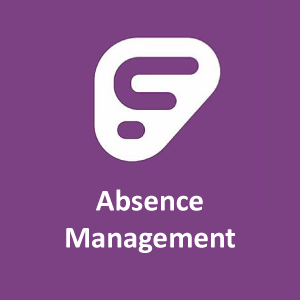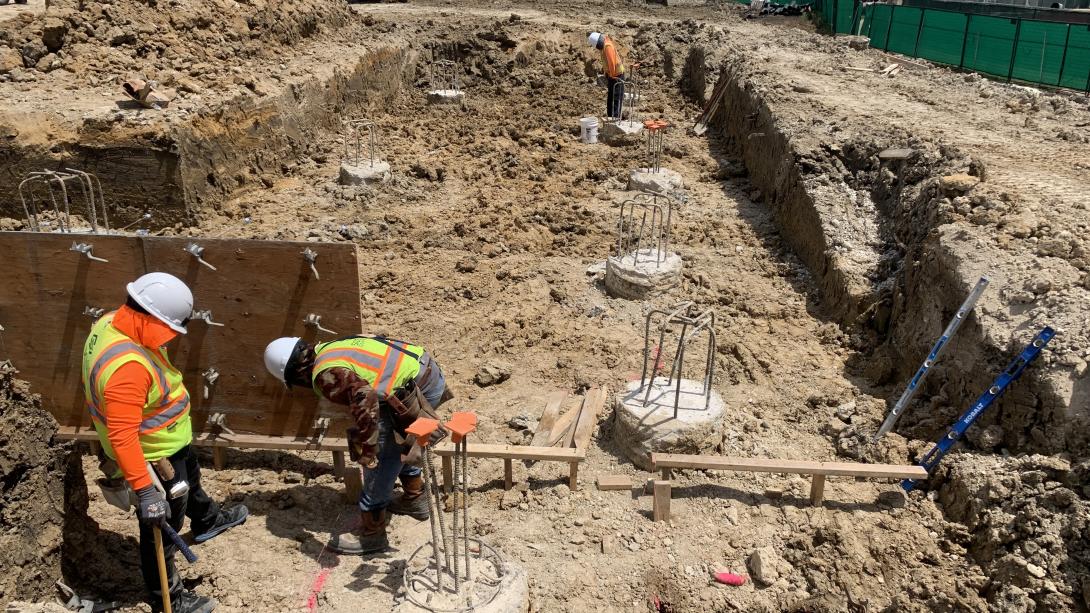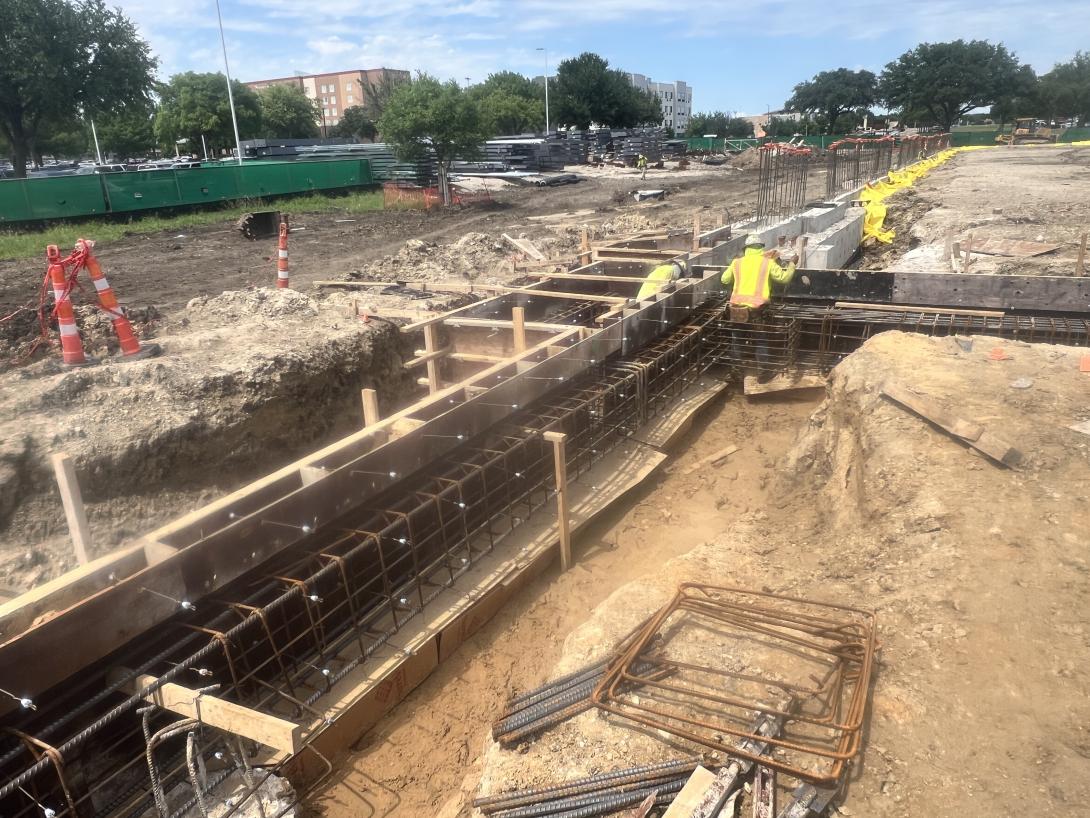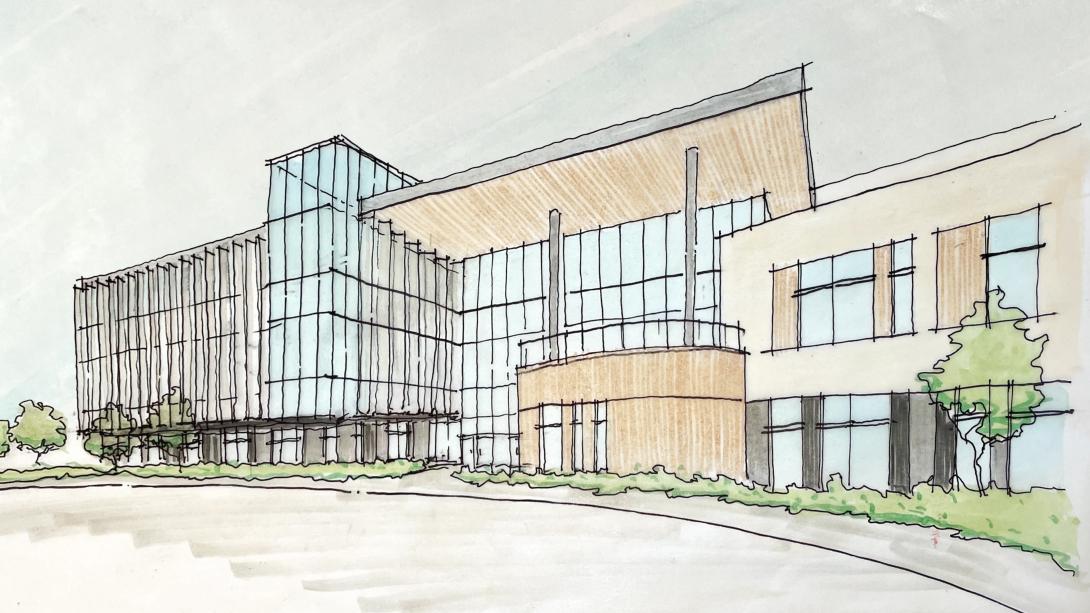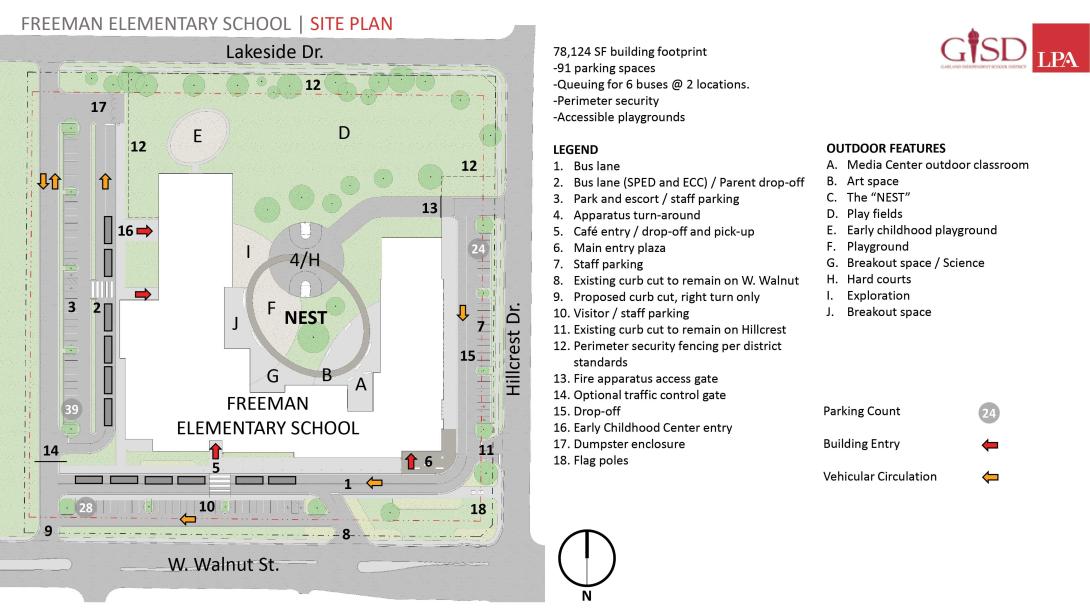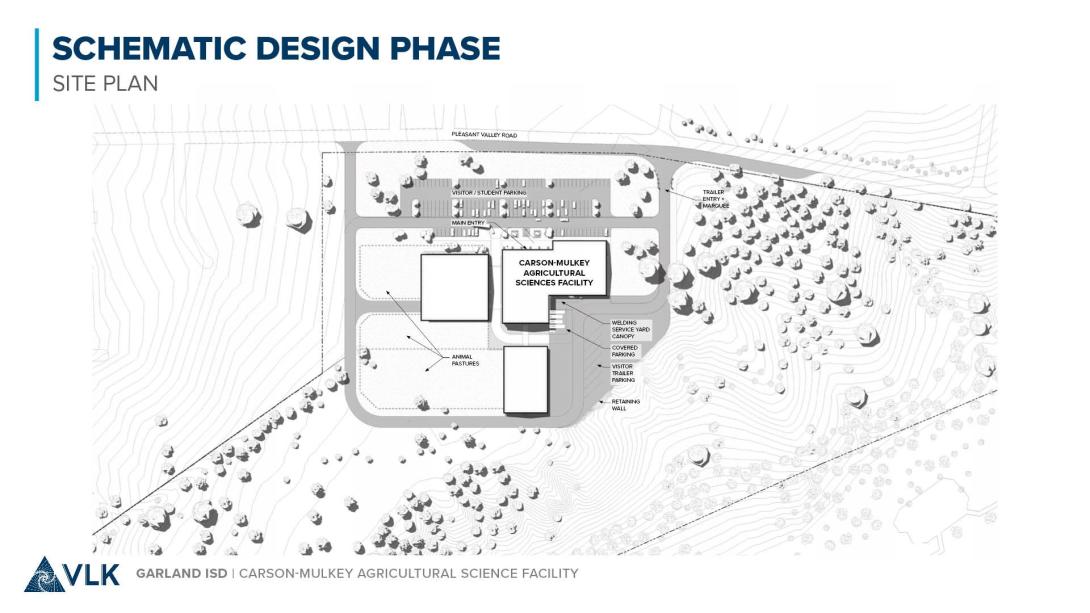


Inside the Blueprint of GISD’s Future
The Timeline, the Progress, and the Promise of Bond 2023
When voters say "yes" to a school bond, they’re investing in the future of education. But the journey from approval to action is more of a marathon than a sprint, with a lot happening behind the scenes before construction begins.
We’re grateful to our GISD community and the cities of Garland, Rowlett, and Sachse for your continued support as we work together to build a brighter future for our students.
While a bond can be approved in a day, the path to building is purposefully complex. Each step is designed to ensure projects are safe, cost-effective, and accountable to taxpayers. Before any physical work can begin, an extensive planning process must be completed.
Planning Makes Perfect
First, there is a discovery and planning phase where the district selects experts, such as architects, engineers, and construction managers, who gather critical information to define the project's goals, requirements, budget, and potential challenges. Architects lead the effort to understand the district’s vision and develop initial design concepts. Engineers assess the feasibility of those concepts by evaluating site conditions, infrastructure needs, and technical requirements. Construction managers provide input on constructability, cost estimates, and scheduling to ensure the project is realistic and achievable. Together, these professionals collaborate to set a clear direction before design and construction begin.
As a project moves into the design phase, architects hold meetings to gather input and create renderings. These go through several review rounds, with the district providing feedback until the final design is approved. Architects also provide cost estimates to keep projects within budget.
Permits and City Approvals
Next comes permitting and approval. Each project must be approved by the city in which it will be built. The architect submits construction documents, including site plans, utility layouts, and detailed building specs. Within each city, multiple departments may review the submission and can issue comments or corrections that must be addressed before a permit can be issued. The architect addresses those comments and resubmits the documents, which are then returned to the reviewers for further review.
This cycle can be repeated multiple times, especially for large or complex projects, such as schools, to ensure safety, compliance, and adherence to community standards.
Delays in permitting can occur if the land requires rezoning, if utility access coordination (including electric, water, and sewer) is necessary, or if special permits or traffic studies are needed.
Our district serves three different cities, each with its own construction permitting process and timeline. As a result, building projects may move through approvals at different speeds. This means some projects may begin earlier or appear further along than others, even if they started around the same time.
Many Bond 2023 projects are currently in the permitting phase, while others remain in the design phase.
Procurement and Construction
A key element of every project at multiple points is the procurement process. By law, Texas school districts are required to advertise for bids, review submissions, and select vendors and contractors based on cost, experience, compliance, and other relevant factors. This step is crucial because it ensures transparency in how public money is spent, but it can be a lengthy process.
Once all of the plans are complete and permits have been granted, the construction phase can begin. However, even then, it is still not an instant build. The timeline for each project varies depending on its size and complexity. A lot of important work, such as installing utilities and laying foundations, has to take place before walls start going up.
Furthermore, there may be delays to the schedule due to weather, supply chain issues, or labor shortages. And with schools in particular, construction is even more challenging since builders often wait for breaks and other times when students are not in school to avoid disruptions to instruction.
After the building is complete, it moves into the closeout phase. It must be inspected for safety before it’s ready for use. Additionally, it must be furnished, technology and security features must be installed, and staff must move in before opening the doors to students.
Pardon Our Dust
A tremendous amount of foundational work is actually happening behind the scenes. Think of it like planting a tree: it takes time for the roots to grow before you see the leaves. Right now, GISD is growing deep roots that will soon blossom into incredible facilities for our students and staff.
Garland ISD is in the midst of what we’re calling a “pardon our dust” season —a time of visible progress and behind-the-scenes momentum that marks the beginning of a district-wide re-energizing effort and a fresh chapter for our tri-city community of Garland, Rowlett, and Sachse. Together, we’re not just building buildings, we’re building the future of Garland ISD.
The Bond 2023 projects will bring bold upgrades and state-of-the-art facilities, enabling us to continue offering the very best for our students. Progress is already underway, and these early milestones represent just the beginning.
Bond 2023 Projects Underway:
- Forced-entry-resistant film installed at all schools (Complete)
- High school softball and baseball field renovations
- Kimberlin Academy for Excellence's new campus
- Freeman Elementary School's new campus
- Playground upgrades and new fencing at all elementary schools
- Multi-Program Activity Centers (MACs) for all high schools
- Distribution of new devices in August for the 2025-2026 school year (Proposition C)
Please visit our Bond 2023 website for additional information. For recordings and summaries of Bond updates presented to the Garland ISD School Board, visit the 2023 Bonds News and Videos website.










